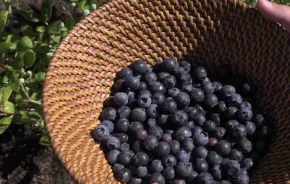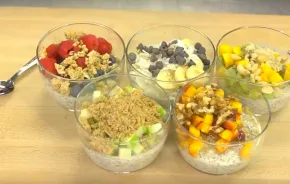With school just starting, here’s something to think about. There is one type of student that traditionally confounds teachers and parents alike. They’re called “twice exceptional” children.
What exactly is a “twice exceptional” child?
A twice exceptional child is one that has an IQ in the gifted range, really the top percentage of our population. That’s their first exceptional quality.
The second exceptional quality is they also have a learning challenge such as dyslexia, dysgraphia, asperger’s or ADHD.
What happens is their IQ is way over here, but their learning challenge is putting their classwork at barely average. They have a huge discrepancy between their potential and their output.
These students are often called “lazy” or not “living up to their potential” by teachers and parents because they see how bright they are, but their grades don’t reflect their intelligence.
Why is a “twice exceptional” child so confusing to teachers and parents?
Many teachers, administrators and parents say they’re incredibly hard to identify because they come across as an average student. Only recently did experts start looking for this and realize a child can be both gifted and have a learning challenge.
To most people “twice exceptional” children look average because they’re superior IQ is compensating and disguising their learning challenge.
Whereas the child with average intelligence that has a learning challenge will most likely be identified because their work will be below average. Those children will likely get help.
It’s estimated that 20% of students have a learning challenge and, sadly, many are also gifted, but never identified and they slip through the cracks.
There are many famous people believed to be “twice exceptional” including Albert Einstein, Thomas Edison, Beethoven, Charles Darwin, Howard Hughes and Paul Allen.
What characteristics should a parent look for if they think their child is twice exceptional?
- Teachers telling them their child is smart, but not living up to their potential. They might appear lazy, underachieving or can’t focus.
- Teachers often say they can’t quite pinpoint “what’s wrong.” They can tell your child is bright, but don’t quite know why things aren’t clicking.
- They understand complex ideas and reasoning, have great visual-spatial abilities and are incredibly creative, but have challenges with basics such as reading, writing and organizing thoughts. They might have poor spelling and handwriting.
- They’re frustrated students, so they often have low self-esteem, have trouble getting along with peers. They might have behavior problems in school. Doing homework can be a challenge.
Remember, twice exceptional children most likely won’t be failing in school, which is why they’re so tricky to identify.
What can a parent do to help?
The first and most important thing a parent should do if they suspect something is to get tested by a professional. Some school districts might test, but sometimes that child has to be failing to get tested. There are many private testers throughout western Washington.
Praise your child’s strengths. There are so many great gifts that go with being twice exceptional. Are they great with Legos and building things? Really praise those talents.
Work on self-esteem. Twice exceptional children don’t feel like their smart and really struggle in school during their younger years. They can soar once they get out into the real world…especially if their self-esteem is good.
Look for alternative ways to teach your child. The traditional school system is probably not the best for a twice exceptional child, but you can look for ways to supplement. You can look for multi-sensory programs which teach children using visual, oral, kinesthetic styles. These are probably the best way for a twice exceptional child to learn.










